Cuisinart Elite Griddler
What we liked: The Griddler Elite consistently performed the best throughout our tests because of its clear user interface and comprehensive set of features. The built-in timer was surprisingly convenient, and we liked that the lid locked closed so it to be stored on its side between uses. The responsive floating hinge allowed for even pressure (even on the towering Cubano sandwiches), while the prominent grill grates produced distinctly marked sandwiches.
All of our favorite panini presses could open flat to become a full griddle or indoor grill, but the Griddler Elite also had independent temperature controls for the top and bottom so you could make two different dishes at once. The cooking surfaces were large enough to make three or four large sandwiches at a time, so it’s a good pick for families or meal-prepping.
What we didn’t like: This pricey model was the biggest and heaviest machine in the lineup. It took up about a square foot and a half of countertop space and weighed over 17 pounds, making it a hassle to put away in a cabinet. I also noticed that, even though the deep grooves of the grill surfaces made for better-looking sandwiches, they tended to be slightly harder to clean.
Key Specs
- Dimensions: 14 x 15.5 x 8.25 inches
- Weight:4 pounds
- Cord length: 5 inches
- Grill grate depth:1 millimeters
- Materials: Stainless steel, aluminum, and plastic
- Temperature Range:200-450°F
- Wattage: 1800 watts
- Care instructions: The detachable plates, plastic scraper tool, and drip tray are dishwasher-safe (top rack only). The external housing can be wiped with a dry or damp soft cloth. Avoid abrasive cleaners and metal utensils, as they can scratch the outside or damage the nonstick coating.
Breville BGR700BSS The Sear and Press Countertop Electric Grill
What we liked: This model had the most complete set of features to make it an everyday go-to. Of course, it made great paninis: The floating hinge cooked the sandwiches evenly, the straightforward settings were quick to adjust, and the detachable ceramic plates were the easiest to clean. The lid could be suspended a few inches over the base to make open-faced sandwiches (or even pizza, in a pinch). It had reversible grill/griddle surfaces that could open flat and independent temperature controls for the two cooking areas. On top of all of its other bonuses, it can also be equipped with waffle iron plates (sold separately) to take its multitasking to the next level.
What we didn’t like: This was the most expensive model I tested. Like the Griddler Elite, it was large enough to make a few servings at a time—which also meant it took up a good bit of counter space and was cumbersome to store. I found the presets ambiguous, and the panini mode made the cooking surfaces too hot to heat our sandwich through without burning the exterior first (it was simple to switch it back to manual controls, though, which worked as expected).
Key Specs
- Dimensions: 25 x 13 x 5.25 inches
- Weight: 2 pounds
- Cord length: 75 inches
- Grill grate depth:6 millimeters
- Materials: Stainless steel, plastic, and PTFE- and PFOA-free ceramic non-stick plates
- Temperature Range: 210-450°F
- Wattage: 1800 watts
- Care instructions: The detachable plates and drip tray are dishwasher-safe (top rack only). The external housing can be wiped with a dry or damp soft cloth. Avoid abrasive cleaners and metal utensils, as they can scratch the outside or damage the nonstick coating.

Cuisinart GR-5B Electric Griddler Five
What we liked: Cuisinart’s Griddler FIVE was a powerful cooking tool in a pared-down package. It still had the most useful features like plates that could be reversed or removed for cleaning, adjustable temperatures, and the ability to open flat. It also had a built-in timer and a clear digital screen. It’s on the smaller side (better for two servings versus the Griddler Elite’s three or four), so it can be more conveniently stored when it’s not needed. Like the Breville Sear & Press, Cuisinart offers waffle plates that can convert this press into a waffle plates.
What we didn’t like: It’s not quite as adaptable as the pricier winners, since there was only a single temperature control for both sides. The user interface was a little less straightforward than our other top picks and required more time and button pushes to adjust the heat and timer. The heat settings themselves were also fairly puzzling. The panini press required the user to choose between grill and griddle modes, but I couldn’t find meaningful differentiation between the two temperature functions or how they heated the cooking surfaces (both worked well to heat both plates, regardless of whether they were on their grill or griddle sides).
Key Specs
- Dimensions: 13 x 13.5 x 8 inches
- Weight: 6 pounds
- Grill grate depth:2 millimeters
- Cord length: 36 inches
- Materials: Stainless steel, aluminum, and plastic
- Temperature Range: 175-450°F
- Wattage: 1500 watts
- Care instructions: The detachable plates, plastic scraper tool, and drip tray are dishwasher-safe (top rack only). The external housing can be wiped with a dry or damp soft cloth. Avoid abrasive cleaners and metal utensils, as they can scratch the outside or damage the nonstick coating.
Cuisinart GR-4N 5-in-1 Griddler
What we liked: Many of the design aspects that I loved about the Griddler Elite and Griddler FIVE were present in the foundational Cuisinart Griddler. It had removable and reversible grill/griddle plates, a lid that could open up 180 degrees, and an effective floating hinge that allowed for more uniform cooking. The analog temperature dials were beyond simple to use and had options for setting the heat by temperature or on a low to high scale. It’s the smallest of our winning panini presses and the easiest to store if you aren’t looking for a full-time countertop resident. As an added bonus, it can be equipped with the same waffle plates as the Griddler FIVE to maximize its capabilities. Given the size of its cooking surface (it is about the same size as the Griddler FIVE’s), the Griddler is good for couples and smaller households.
What we didn’t like: The Cuisinart Griddler does make some compromises in exchange for being a lighter, more affordable machine (although we think they are fairly minor ones, at that). It does not have separate temperature settings for the top and bottom plates, a built-in timer, or the ability to lock the lid for sideways storage. I also noticed that the floating hinge necessitated sandwiches (particularly thicker ones, like the Cubanos) be pushed toward the back of the base plate in order to have the most even pressure from the lid. This happened to some degree for all of the panini presses I tested, but it was more noticeable as the cooking surfaces got smaller.
Key Specs
- Dimensions: 5 x 13 x 7.75 inches
- Weight: 9 pounds
- Grill grate depth:8 millimeters
- Cord length: 36 inches
- Materials: Stainless steel, aluminum, and plastic
- Temperature Range: 200-425°F
- Wattage: 1500 watts
- Care instructions: The detachable plates, plastic scraper tool, and drip tray are dishwasher-safe (top rack only). The external housing can be wiped with a dry or damp soft cloth. Avoid abrasive cleaners and metal utensils, as they can scratch the outside or damage the nonstick coating.

The Competition
- Cuisinart Contact Griddler with Smoke-Less Mode: I found the user interface of the Smoke-Less Griddler awkward and time-consuming to navigate. It had four, somewhat vague protein-specific presets to mitigate smoke as well as a front kickstand to encourage grease drainage. While the latter could be helpful for bacon or burgers, I preferred to adjust temperatures manually (smoke was relatively easy to manage just by avoiding overly high temperatures).
- Breville Panini Duo: This streamlined offering from Breville performed almost as well as our winners in making evenly toasted, melty Cuban sandwiches, but it had irremovable plates and no adjustable temperature settings. For a model in the same price range as the Cuisinart Griddler, I expected more convenience and adaptability.
- Chefman Panini Press Grill: The Chefman grill’s single heat setting was too hot and burned the Cuban sandwich’s bread in the time it took for the cheese inside to melt. It also had an ineffective floating hinge, so the back half of the sandwiches was deeply toasted while the front looked relatively untouched.
- Elite Gourmet Panini Press & Grill: This model had fixed plates that were hard to clean and no adjustable temperature settings. The base plate was just big enough to hold one Cubano, but the lid could not float over the thick sandwich and instead closed on it at an angle (pushing it apart in the process).
- George Foreman 2-Serving Classic Plate Indoor Grill and Panini Press: Despite the brand’s synonymity with indoor grills, this model lacked core design features that were standard in other presses. It had the drip tray set in the front of the machine, so any grease or oil on the top cooking plate ran straight down into the back hinges upon opening. Its lid also felt wobbly and loose, and could not exert enough pressure on the top of the sandwich to cook it evenly. Although it touts being able to cook two servings at a time, it was only big enough to hold one sandwich (at an angle).

FAQs
What is a panini press?
A panini press—also known as a sandwich press, indoor grill, or contact grill—is a countertop electric appliance that has heated plates on the top and bottom so it can cook food on both sides at once. The plates can be smooth (like a griddle), ridged (to create grill marks), or reversible with both options. It has a clamshell design, often with a floating hinge that allows the top plate to come down parallel with the base to create even pressure on the food inside. A panini press can also refer to a cooking weight, which is a flat, heavy piece of metal (usually cast iron or stainless steel) with a handle that can be placed on top of sandwiches, meat, or vegetables in a pan to encourage a uniform sear.
Can a panini press be used for more than panini?
Yes, panini presses are popularly used to cook burgers, boneless cuts of meat, bacon, kebabs, and vegetables. Some even have smooth plates and can expand flat for griddling food like eggs or pancakes.
Can a panini press be used as a grill?
Sort of. Similar to using a grill pan on a stove, a panini press won’t be able to reproduce the smoky flavor and charred texture you would get from an outdoor grill, but it can yield food with seared grill marks and a crisped exterior.
How do you clean a panini press?
Some panini presses have convenient detachable plates that can be removed and washed by hand (or sometimes, in the dishwasher). Others have fixed plates that must be wiped out with a damp cloth and mild dish soap. Many contact grills also include a plastic scraper tool that can be used to gently remove food debris from the cooled plates. If it comes with one, the grill’s grease drip tray should be washed by hand or in the dishwasher after each use to avoid buildup. The exterior can be wiped with a dry or damp cloth or soft sponge (do not immerse the machine in water). Never use metal utensils, abrasive detergents, or scouring pads on the panini press as it can damage the nonstick plates and scratch the outer body.

If you want more information on food and recipes, keep following us: https://www.bygoody.com/







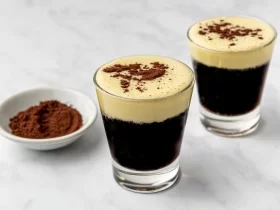


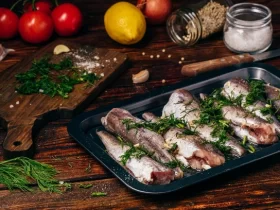
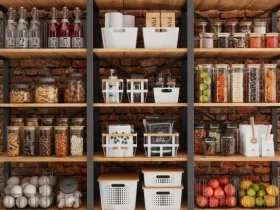
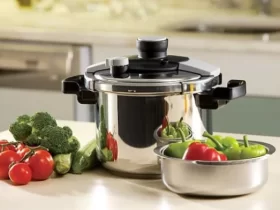

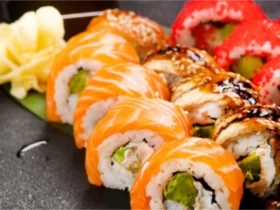

Leave a Reply